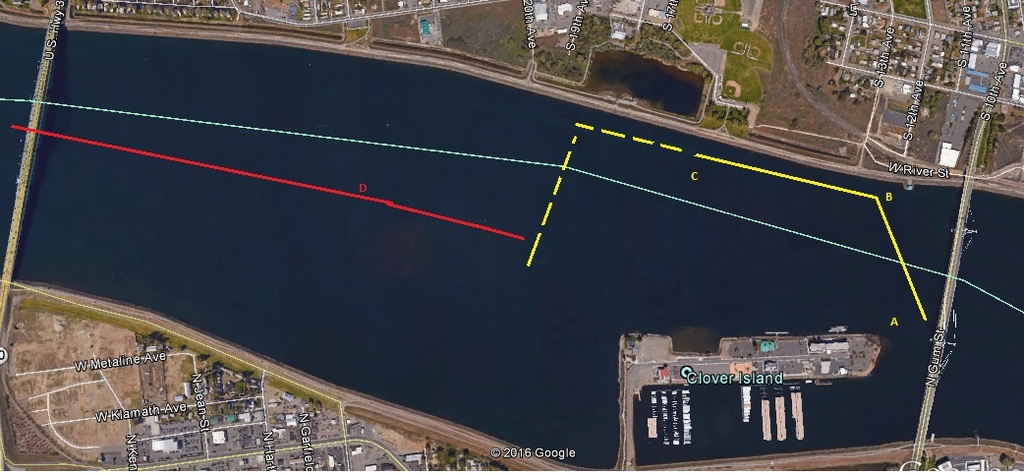I'm a big fan of Junior Achievement. I've been a JA volunteer teacher for many years, help with their annual fund raisers and helped them out in any way I can.
Last night we had 13 of their staff (and a couple of husbands) on the boat for a late evening cruise. We had been on the water for about 3.5 hours, watched the sun set and were just slow cruising back to the slip. It was well after dark and we were on a stretch of the river that was about 1/2 mile wide. I had seen a boat's lights about 1/2 mile ahead as it crossed from my right to left then went parallel to the north shore. It was moving very slowly so after watching it for a few seconds and realizing it presented no hazard, I stopped watching it.
Tina took over the helm as I was answering some questions from one of the passengers. I happened to glance back to the area in front of the boat and saw the sailboat now on a tack that would cross our bow, close enough to be a real hazard. Tina had not seen it so I told her to immediately go into reverse.
She did, we came to a stop, and the boat (about a 24' sailboat) passed by less than 15 yards from our bow.
The sailboat had its navigation lights on, with the 360* light at the top of the mast and its green starboard light illuminated. Other than that the boat was nearly invisible.
Now I realize that the sailboat under sail was the stand on vessel and we were the give way vessel. But I also realize that there's such a thing as being "dead right". Had I not spotted its green nav light and recognized it for what it was, we most likely would have hit it. Had that happened, even though we were only moving about 6 knots, we probably would have sunk it. Had that happened, there likely would have been a fatality or possibly several of all the people on the sailboat.
The "skipper" (using that term loosely) must have seen us. Our nav lights were working, plus the interior cabin lights were on. I was amazed that someone would put himself and his boat (and possibly passengers) in jeopardy by pulling a bonehead move like he did.
Last night we had 13 of their staff (and a couple of husbands) on the boat for a late evening cruise. We had been on the water for about 3.5 hours, watched the sun set and were just slow cruising back to the slip. It was well after dark and we were on a stretch of the river that was about 1/2 mile wide. I had seen a boat's lights about 1/2 mile ahead as it crossed from my right to left then went parallel to the north shore. It was moving very slowly so after watching it for a few seconds and realizing it presented no hazard, I stopped watching it.
Tina took over the helm as I was answering some questions from one of the passengers. I happened to glance back to the area in front of the boat and saw the sailboat now on a tack that would cross our bow, close enough to be a real hazard. Tina had not seen it so I told her to immediately go into reverse.
She did, we came to a stop, and the boat (about a 24' sailboat) passed by less than 15 yards from our bow.
The sailboat had its navigation lights on, with the 360* light at the top of the mast and its green starboard light illuminated. Other than that the boat was nearly invisible.
Now I realize that the sailboat under sail was the stand on vessel and we were the give way vessel. But I also realize that there's such a thing as being "dead right". Had I not spotted its green nav light and recognized it for what it was, we most likely would have hit it. Had that happened, even though we were only moving about 6 knots, we probably would have sunk it. Had that happened, there likely would have been a fatality or possibly several of all the people on the sailboat.
The "skipper" (using that term loosely) must have seen us. Our nav lights were working, plus the interior cabin lights were on. I was amazed that someone would put himself and his boat (and possibly passengers) in jeopardy by pulling a bonehead move like he did.


